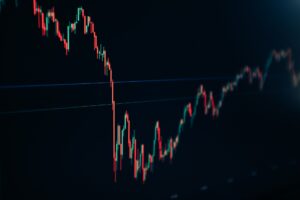“For me, the pain is still too near.” – Legolas, Lord of the Rings, after Gandalf fell to the Balrog. Ok, it’s not that terrible/dramatic, but as a UConn fan and alumnus, I still feel the sting of losing to the Florida Gators, a top contender to win the NCAA Championship this year. Winning back-to-back championships is tough. Winning three in a row? That’s next-level. The Huskies had a prime opportunity to cement their legacy, only to fall short of becoming history-makers. It’s a reminder that sustained success is never guaranteed.
In sports, the three-peat is an extremely rare feat. Michael Jordan’s Bulls did it. The Yankees pulled it off in their dynasty years. The Celtics did back in the Bill Russel era, and UCLA dominated in the Wooden era. But even the Chiefs, despite their recent dominance, couldn’t clinch a third consecutive Super Bowl victory this year; this brings us to the stock market.
The S&P 500 has already pulled off back-to-back 20%+ gains. Now, it’s flirting with a historic third. If it delivers another 20%+ year, it would be an incredibly rare occurrence that has only happened four times in the past century.
Stock Market Growth – Can the Streak Be Kept Alive?
Just like in sports, momentum is a powerful force in the stock market. When a team is on a winning streak, confidence is high, players feed off the inertia, and everything seems to click. The same can be said for investors riding a bull market. Positive sentiment, strong earnings, and economic tailwinds create a self-reinforcing growth cycle.
But streaks, by nature, don’t last forever. As a tough (and most likely underestimated) opponent can derail a championship run, macroeconomic challenges can throw the market off course. Inflation concerns, interest rate policies, and geopolitical tensions can shift the game at any moment. The question isn’t whether the market will face resistance but whether it can power through it.
Is a Historic Opportunity Upon Us?
If the S&P 500 does notch another 20%+ year, it will be in rare company. Historically, markets that achieve this sustained success tend to be driven by strong economic fundamentals, innovation cycles, or unique financial conditions. The past three-peat occurrences were followed by years of continued market expansion and eventual corrections. Just like sports dynasties, markets eventually fade and move in cycles.
Of course, there are many new considerations regarding where the country is heading, who we will impose tariffs on, and whether or not the market can Bull through all the unknowns and uncertainties. If you’re a frequent reader of mine, you’ll know that I always stick with the guiding philosophy that the market has always shown continued resistance and growth, dating back to WWII. For day traders and those that fall into every meme-stock trend, yes, these could be concerning times, but having a core financial plan and sticking with it makes any turbulence in the markets less dramatic.
I’ve had a few inquiries lately about the recent market volatility. With the markets’ volatility, it’s important to maintain perspective. Historically, market declines are common, even in years with double-digit positive returns. The chart below illustrates that pullbacks and corrections are part of a typical market cycle and don’t necessarily signal the end of a strong trend. Investors who stay through these fluctuations without panic are often rewarded with long-term gains.

So, unlike UConn, the stock market still has a shot at making history. To get some more insights, discuss your family’s financial plans, or how the Huskies will reload through recruiting and the transfer portal, please reach out; as an experienced Boston financial planner, my door is always open!
To read more of my thoughts on market volatility and financial planning, check out this accompanying article: Bull and Bear Markets: Sticking to the Game Plan.
This material is for general information only and is not intended to provide specific advice or recommendations for any individual. There is no assurance that the views or strategies discussed are suitable for all investors or will yield positive outcomes. Investing involves risks, including possible loss of principal.




